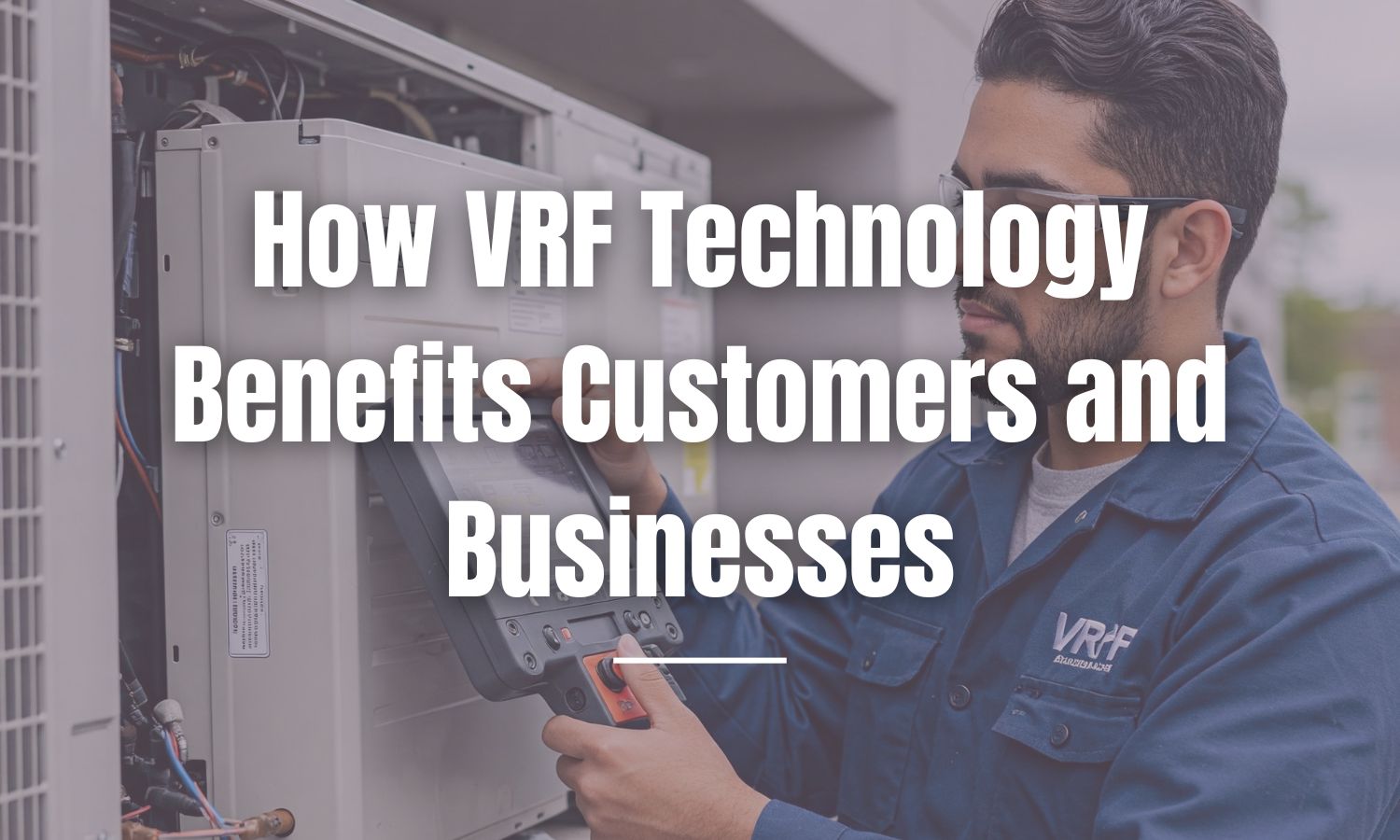Why VRF Technology is a Game Changer for HVAC Businesses
Variable Refrigerant Flow (VRF technology) is transforming the HVAC industry by providing energy-efficient, flexible and cost-effective heating and cooling solutions.
Whether you run a small HVAC business or a large commercial operation, offering VRF technology to customers can improve comfort, reduce energy bills and boost profitability.
In this blog, we’ll cover:
- What VRF technology is and how it works
- The benefits of VRF technology for customers and businesses
- How VRF systems compare to traditional HVAC systems
- Energy savings and cost benefits
- How offering VRF technology can help scale your HVAC business
As the demand for energy-efficient HVAC solutions increases, adopting VRF technology into your list of service offerings can set your HVAC business apart in a competitive market.
What is VRF Technology?
VRF technology is an advanced HVAC system that delivers precise heating and cooling by varying the flow of refrigerant to different indoor units. Unlike traditional systems that operate at full capacity, VRF systems adjust their output based on demand, making them more efficient and comfortable.
How Does It Work?
- A single outdoor unit connects to multiple indoor units.
- The system detects real-time temperature needs and adjusts refrigerant flow accordingly.
- It can provide both heating and cooling simultaneously in different zones.
- Inverter-driven compressors improve efficiency by reducing energy consumption.
Types of VRF Systems
There are two main types of VRF technology:
- Heat Pump VRF: Provides either heating or cooling to all zones at one time.
- Heat Recovery VRF: Allows simultaneous heating and cooling in different zones, making it ideal for buildings with varying temperature needs.
Benefits of VRF for Customers
1. Energy Efficiency and Lower Utility Bills
One of the biggest advantages of VRF technology is its ability to significantly reduce energy consumption. Because it adjusts refrigerant flow based on demand, it avoids the energy waste common in traditional HVAC systems.
- Fact: VRF systems are up to 40-50% more efficient than conventional HVAC systems.
- Businesses and homeowners using VRF technology can save 30-45% on energy bills compared to traditional systems.
2. Superior Comfort and Temperature Control
Traditional HVAC systems turn on and off to regulate temperature, causing fluctuations. In contrast, VRF technology continuously adjusts to maintain a steady, comfortable indoor climate.
- Eliminates hot and cold spots.
- Allows different rooms or zones to have individualized temperature settings.
- Provides whisper-quiet operation, ideal for offices, hotels and homes.
3. Space-Saving and Flexible Design
VRF technology eliminates the need for bulky ductwork, making it perfect for:
- Older buildings where installing ducts is difficult.
- Small commercial spaces that require efficient heating and cooling solutions.
- Multi-story buildings needing different climate zones.
4. Fewer Breakdowns and Low Maintenance
Because VRF systems run at variable speeds instead of constantly cycling on and off, they experience less wear and tear. This means:
- Fewer system failures and emergency repairs.
- Lower maintenance costs over the system’s lifespan.
- Longer-lasting components, with many systems lasting 20+ years.
Benefits of VRF Technology for Your HVAC Business
1. Increased Profitability and High-Value Installations
Installing VRF technology offers higher profit margins compared to traditional HVAC systems. While the upfront cost is higher, customers are willing to invest due to long-term energy savings and efficiency.
- Fact: The global VRF market is expected to reach $24.7 billion by 2030 due to rising demand.
2. Competitive Advantage in the HVAC Industry
Offering VRF technology helps your HVAC business stand out from competitors still relying on outdated systems. Customers looking for energy-efficient solutions will trust a company that specializes in modern VRF systems.
3. Faster and Easier Installations
Since VRF systems use minimal ductwork, installation is quicker and less invasive compared to traditional ducted HVAC systems. Benefits include:
- Less labor-intensive work for technicians.
- Faster job completion, allowing you to serve more customers.
- Reduced disruption to the customer’s business or home.
4. Lower Long-Term Service Costs
Since VRF technology requires fewer repairs and maintenance visits, HVAC businesses can focus on providing value-added services rather than frequent emergency repairs.
5. Ideal for a Variety of Customers
Offering VRF technology allows you to serve a wide range of customers, including:
- Commercial buildings (offices, hotels, hospitals)
- Multi-family housing complexes
- Retail spaces and restaurants
- High-end residential homes
VRF Technology vs. Traditional HVAC Systems
| Feature | VRF Technology | Traditional HVAC |
| Energy Efficiency | ✅ High (40% more efficient) | ❌ Lower efficiency |
| Zoning Capabilities | ✅ Yes, customizable zones | ❌ Limited control |
| Maintenance Costs | ✅ Lower over time | ❌ Higher due to frequent repairs |
| Installation Requirements | ✅ Minimal ductwork, flexible | ❌ Requires large ducts |
| Lifespan | ✅ 20+ years | ❌ 15-20 years |
- Fact: VRF systems operate at 200-240 volts, while traditional HVAC units often require higher power loads, increasing energy costs.
Expert Marketing Tips
To successfully sell VRF technology, HVAC businesses should:
- Educate customers on long-term savings – Provide data on lower energy bills and reduced maintenance costs.
- Highlight efficiency and comfort benefits – Explain how VRF systems provide better temperature control.
- Offer financing options – Help customers afford the upfront cost of VRF installation.
- Showcase successful installations – Use case studies and testimonials to build trust.
See how FieldEdge can help HVAC businesses like yours save time and money. Book your FREE personalized demo today!
Start Offering VRF Technology to Expand Your Market!
VRF technology is the future of HVAC, providing unmatched energy efficiency, comfort and reliability. For your HVAC company, installing and maintaining VRF systems opens new revenue opportunities while offering customers a superior heating and cooling solution.
Here are a few things to remember going forward:
- VRF technology is up to 40-50% more efficient than traditional HVAC systems.
- Customers save 30-45% on energy costs with VRF systems.
- VRF offers zoned temperature control, eliminating hot and cold spots.
- You can use VRF technology to increase profits through high-value installations.
- The VRF market is growing rapidly, making it a smart investment for your HVAC company.
By staying ahead of the curve and offering VRF technology, your HVAC business can expand into a new customer base, increase revenue and establish your business as a local industry leader.
Related: Selling Opportunities for New HVAC Technology




